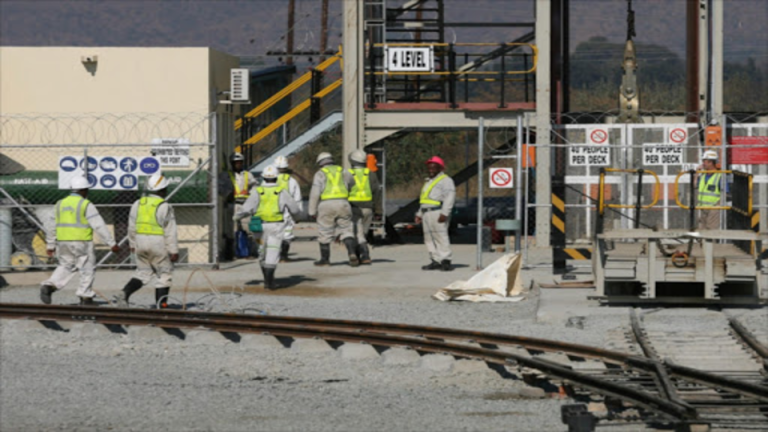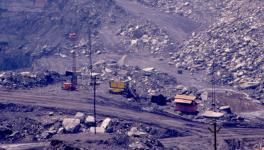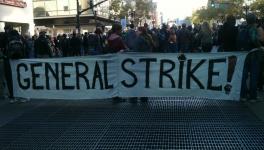3,000 Workers in South Africa’s Mining and Smelting Sector May Lose Their Jobs

Samancor is one of the world's largest suppliers of chrome alloys, including ferrochrome and chromite ore.
Over 3,000 workers in South Africa may be retrenched by Samancor Chrome Limited, a company involved in mining and smelting chrome ore. Samancor, with a capacity to produce 1.2 million tons, is one of the world’s largest suppliers of chrome alloys, including ferrochrome and chromite ore, which are used to give stainless steel its resistance to corrosion. South Africa supplies 30% of the global demand for ferrochrome.
Workers organized by the National Metalworkers Union of South Africa (NUMSA) are preparing to resist the retrenchments.
Samancor claims that due to adverse circumstances, the company is revising its production for 2020 downwards – chromite ore by roughly 29% and ferrochrome by 20%. In accordance with this plan, the company has initiated the retrenchment process, which “may affect 2,438 employees at the company’s mining operations and 599 employees at its smelters,” according to its statement.
The sector in the country has been badly affected due to declining ferrochrome prices and a major loadshedding crisis due to the financial stress on the state’s electricity company, Eskom.
On January 23, Samancor released a statement saying that 595 of the employees whose jobs are on the line in its smelters are members of the bargaining unit of NUMSA, which has been served Section 189 notices by the company.
Section 189 of South Africa’s Labor Relations Act mandates that company must initiate a consultation process with the union representing the employees (or directly with the employees in case they are not members of a recognized union) before retrenchment.
In the consultation process, the employer is obliged to explain the operational reasons requiring retrenchments, consider possible alternatives to dismissals, agree on severance pay and other forms of assistance the employer should offer to the dismissed employees.
In the notice served to NUMSA, the company has said that weak prices, competition from the Chinese market and the unprecedented levels of loadshedding by Eskom are the operational reasons for the company’s poor performance, which is necessitating retrenchments.
NUMSA, which is also battling the management of Eskom to save the state-owned enterprise from being wound up and sold in bits to private companies, said, “We are deeply concerned that once again, the cost of electricity and the crisis of loadshedding has resulted in the threat of job losses.”
“We need to ensure that Eskom provides the country with a cheap regular supply of electricity so that we can industrialize and build our economy,” added the statement by the union’s national spokesperson, Phakamile Hlubi-Majola. “This is impossible to do whilst Eskom continues to lurch from one crisis to another. Loadshedding and high energy costs are having a direct impact on production, and in turn, this is resulting in workers losing their jobs.”
However, the union suspects that the electricity crisis, which has been ongoing since the beginning of last year, is being used by private companies as an excuse to shed jobs solely for profit motives.
Addressing a meeting of stakeholders in Eskom last year, the union’s general secretary, Irvin Jim, had already expressed this concern. “NUMSA is dismayed by the opportunistic.. stance adopted by many companies in the private sector who exploit Section 189 of the Labour Relations Act where they rush to retrench workers using mechanisms to justify this agenda, such as restructuring and reorganizing. To appear to be compliant with the LRA, they cite operational reasons,” he had said.
“Samancor is pleading poverty,” Hlubi Majola’s statement said. “[B]ut at the same time it has made a move to purchase Hernic Ferrochrome in a deal reported to be worth over R500 million [$34.8 million]. We have to wonder if the real motivation for retrenchments is greed so that the company can simply improve its balance sheet by shedding jobs.”
To facilitate the consultation process under Section 189, Samancor has approached the Commission for Conciliation, Mediation and Arbitration (CCMA). The date for the first consultation session is yet to be confirmed. “As NUMSA we will do everything possible to try and mitigate against any job losses through this process,” Hlubi Majola said.
Get the latest reports & analysis with people's perspective on Protests, movements & deep analytical videos, discussions of the current affairs in your Telegram app. Subscribe to NewsClick's Telegram channel & get Real-Time updates on stories, as they get published on our website.
























